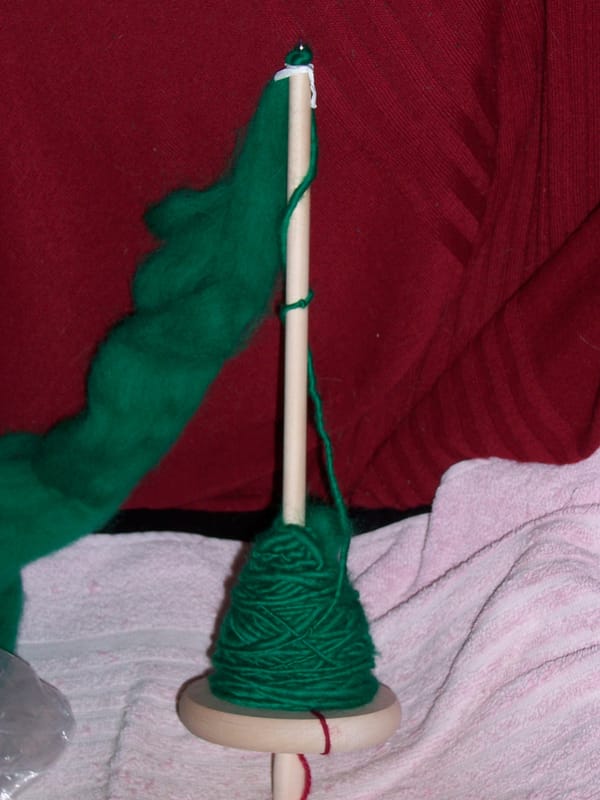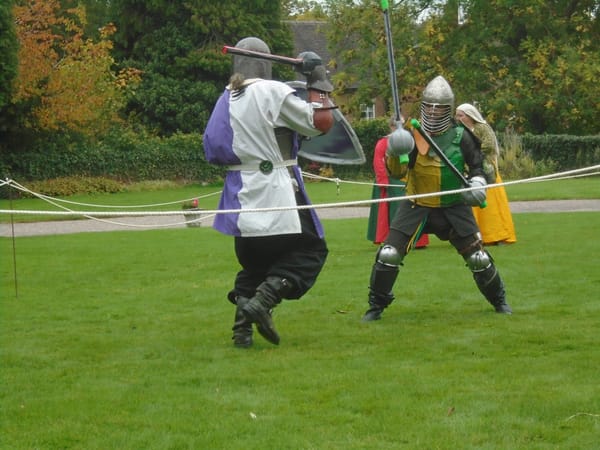Mending their nets
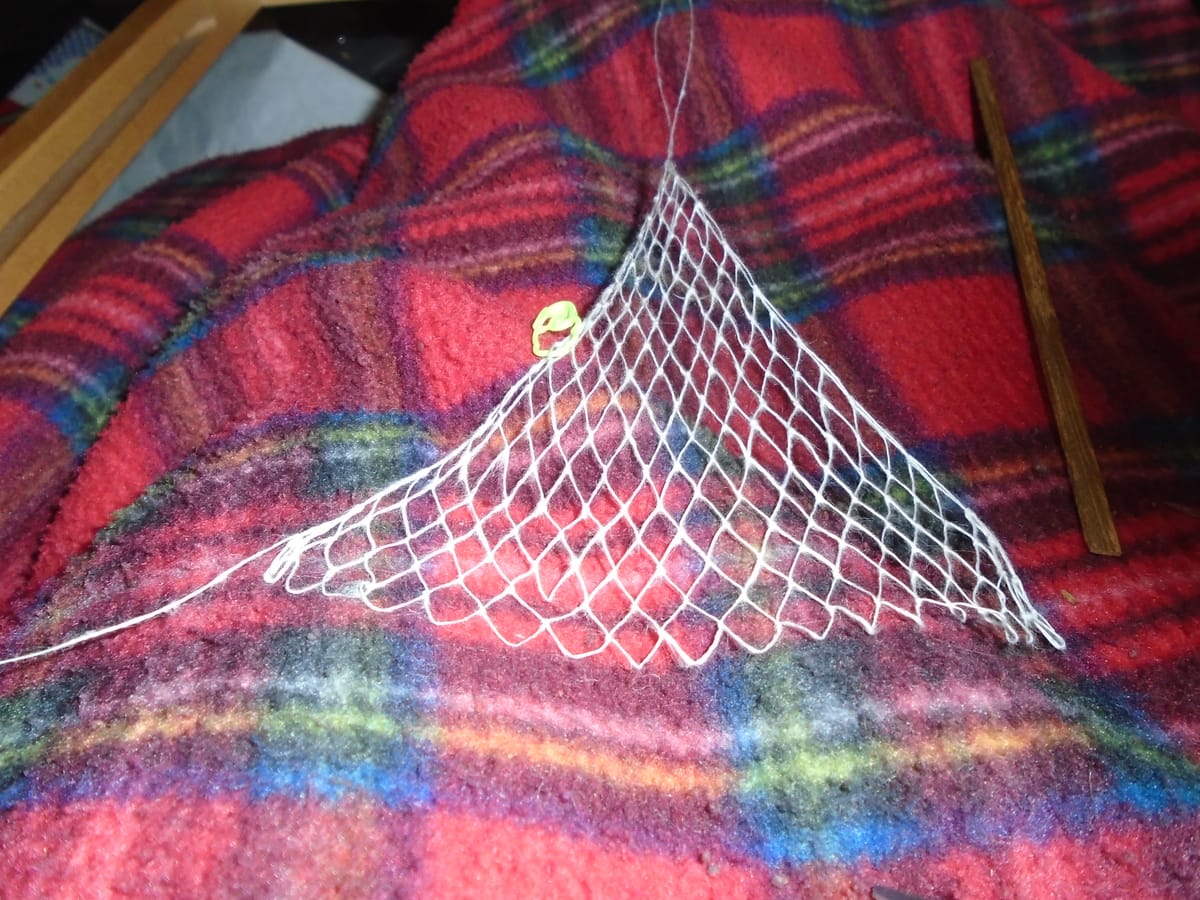
I have probably mentioned before that my sister is fond of saying that anyone can knit, but what makes a real knitter is the ability to fix mistakes. That goes for any craft; and netting is no exception.
There are really only two major things you can do wrong in netting, but both of them can be quite a nuisance to put right. The more common of the two is to pick up an extra strand by accident. Mr Holdgate stresses the importance of avoiding doing this at the beginning of a row, and he's quite right to do so, but in fact it can happen anywhere in a piece of netting. If you pick up two extra strands by mistake, you've got an accidental decrease, but I've never done that and I should think it's pretty rare. Picking up one extra strand just creates a distortion in the net. I actually did this while making the green shawl, and didn't discover my mistake till I'd done a couple more rows. Since it wasn't essential that there was a 100% regular grid pattern, I just fudged something to make up for it; one small mistake in a shawl that size isn't really going to show.
The other one is to miss out a mesh altogether. Again, Mr Holdgate exhorts the beginner to look out for this one... but when making a string bag, or something similarly large-gauge. I have never once missed a mesh on a large-gauge project, for the simple reason that you can see them easily and they don't tend to stick together. Come to that, I think I've only once ever picked up an extra strand on a string bag, and by now I've made quite a lot. When I did that, I noticed instantly, and it was very easy to take out. I just stuck a cable needle into the knot and wiggled it loose so that I could undo it.
The thing with netting is that the finer your gauge, the more likely you are to make both types of mistake... and the harder it is to put them right. And if you're making square-mesh netting for filet work, which is the main reason you'd bother with fine gauge at all, then you really do have to put them right. You can't get away with a fudge, or it'll spoil your nice regular embroidery. When I finished a row of the piece I'm making at the moment and noticed I'd picked up an extra strand on one of the meshes, I heaved a sigh, because I was just going to have to take it all out again till I got to the offending knot. I had to use a fine ball-point sewing needle to wiggle about in the knots to work them loose... and that was a lot harder. But I did it.
So you can imagine what I thought when I saw the situation we have in the feature photo above. I know exactly how it happened; the linen thread I'm using is not nice and smooth, like mercerised cotton or regular polyester sewing thread. It is a little bit fuzzy. So, once in a while, you'll get a couple of meshes that stick together, so you don't notice you're skipping one. (Since this incident, I have, of course, been a lot more careful to check for that!)
I should think it would have taken me at least an hour to unpick all the way back to the skipped mesh, given that I'd done a whole additional row before I noticed. And so I thought... right. I have to fix this, but there ought to be a relatively quick-and-dirty way to do it, and if it leaves a few extra knots they'll probably disappear inside the embroidery anyway.
So, first of all, I did this:
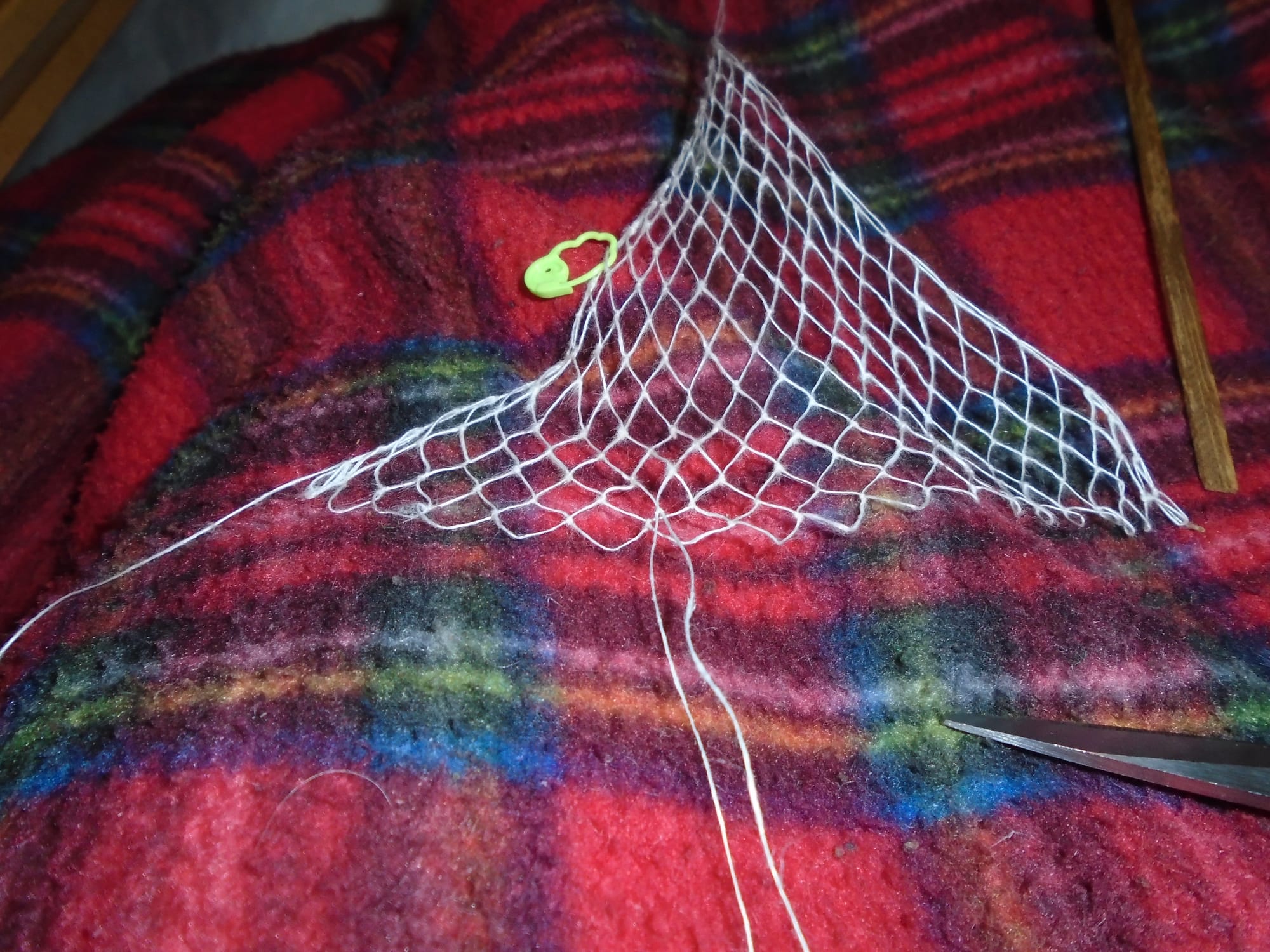
I wasn't quite sure what I was going to end up doing at this stage, so I knotted the extra thread in at the centre so I'd have two ends the same length to play with. I felt I might need them, and I wasn't wrong.
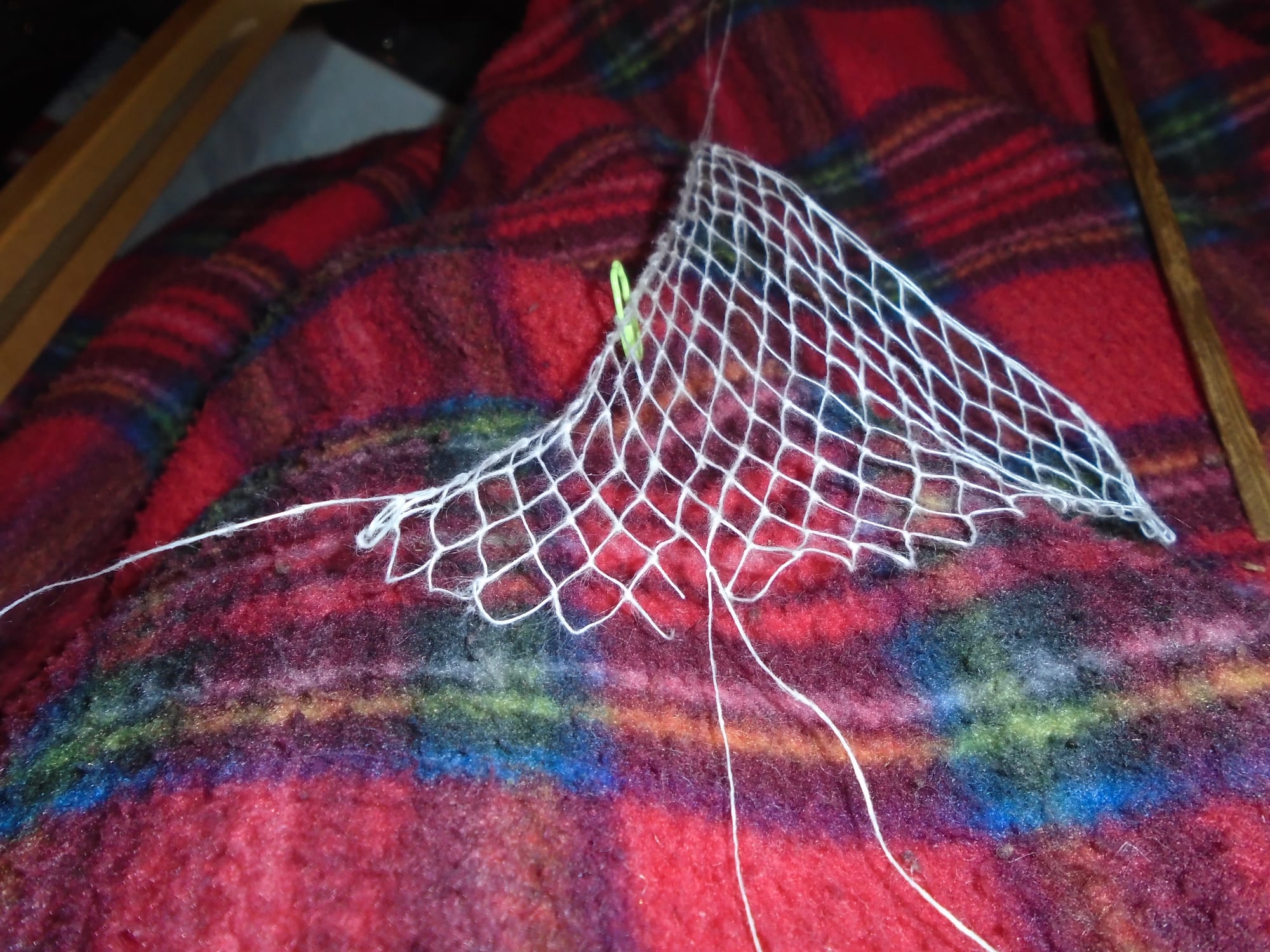
I couldn't do anything with those loose ends, so I just snipped them out, leaving me with this:
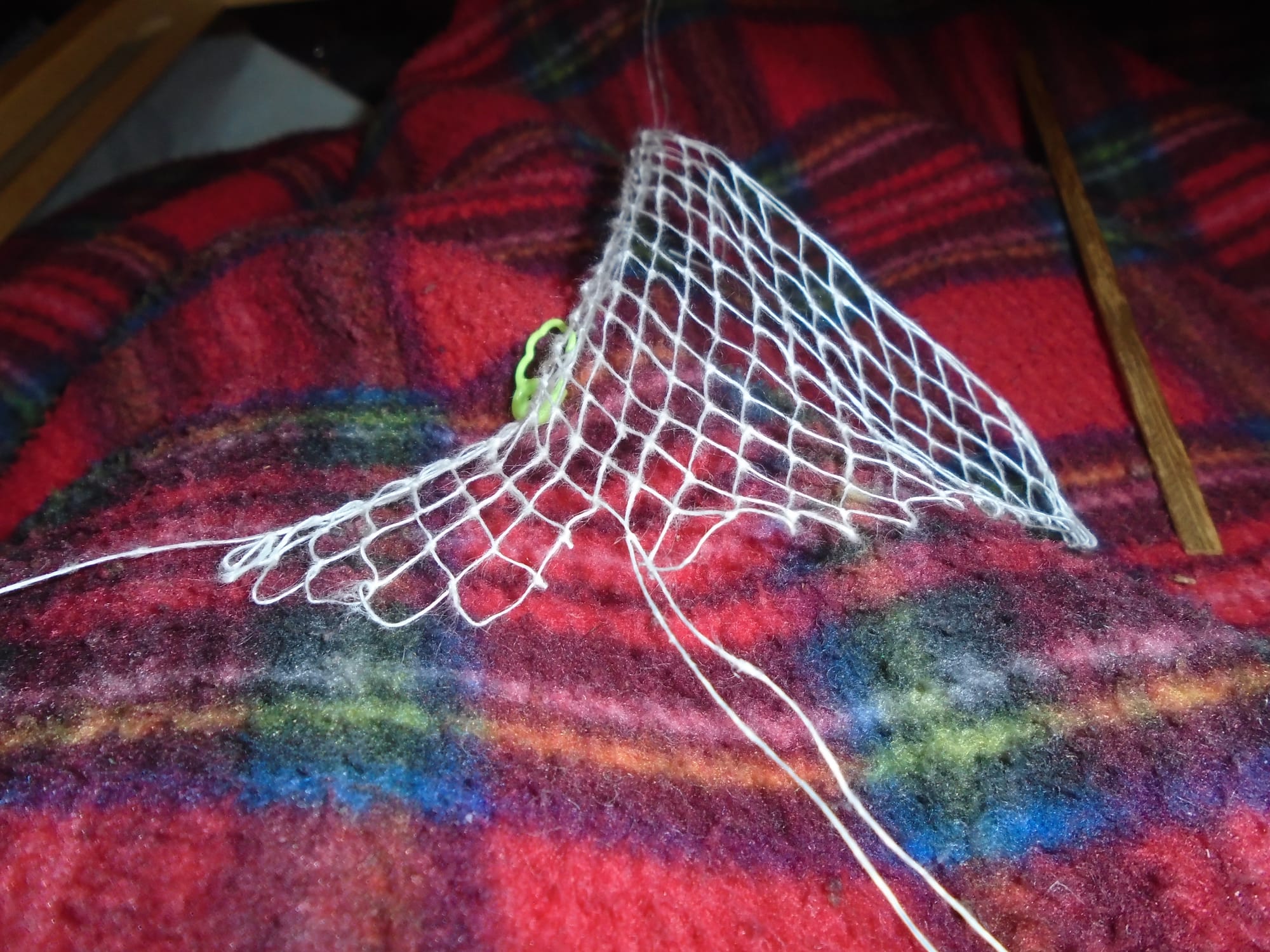
After that, I just played it by ear. Obviously the first thing to do was to construct the missing mesh that was furthest back, because the two meshes below it would use it; so I took the left-hand thread and knotted it into the base of the mesh above and to the left of the new mesh, and then I knotted the right-hand thread into the junction it passes across in the above photo. (It rather looks as if it's knotted in already, but that's an illusion; it isn't.) From there, all I now needed to do was to cut off the original left-hand thread and then use the remaining length of thread to work the two missing meshes back along the row. If that all makes sense. The result looked like this:

So far, so good, but I wasn't completely happy with it until I had consolidated the repair by working an extra row, like this:
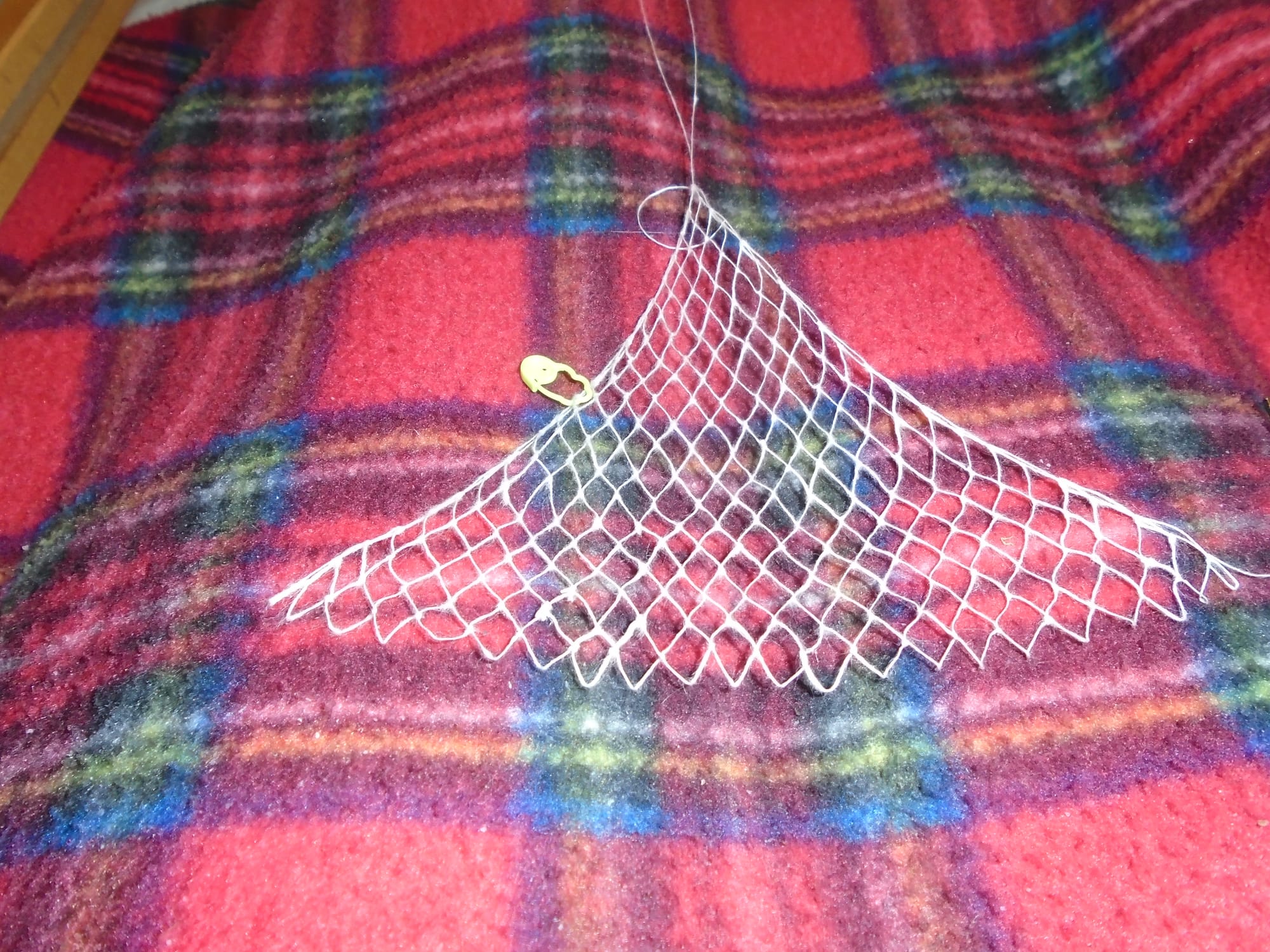
Now, this was all completely off the cuff. So I don't know, but it is now a pretty well-educated guess, that when you read about Peter, James, and John sitting there mending their nets, this is probably more or less what they were doing. Of course, they wouldn't have been working fine-gauge, so I doubt they had to fix skipped meshes, especially since the odd skipped mesh doesn't matter all that much for a fishing net; they would have been repairing tears, but I should imagine it came to the same thing. They would have taken a piece of string of the sort they originally used to make the nets and knotted it in over the damaged areas, either trimming out the loose ends first or, possibly, using them as a rough guide (especially if, as I suspect, they weren't using mesh sticks) and then removing them once the new string was securely in place.
Mr Holdgate doesn't cover any of this. So I shall make sure I remember to mention it at my Easter class... because, after all, we all make mistakes.

